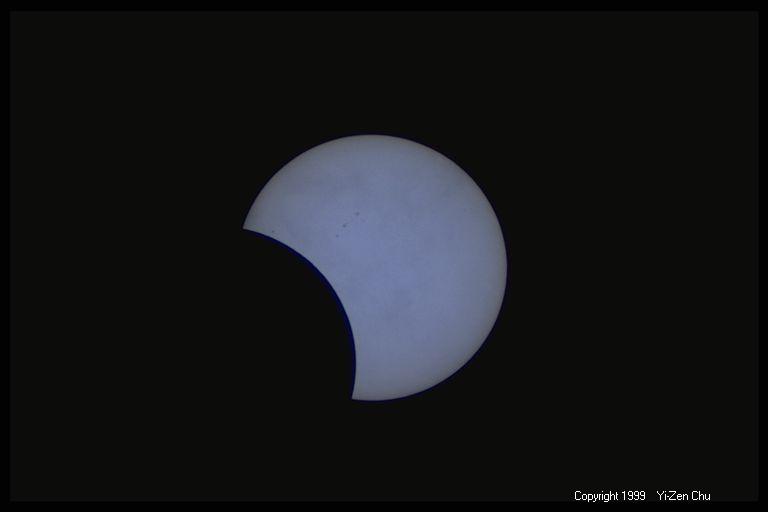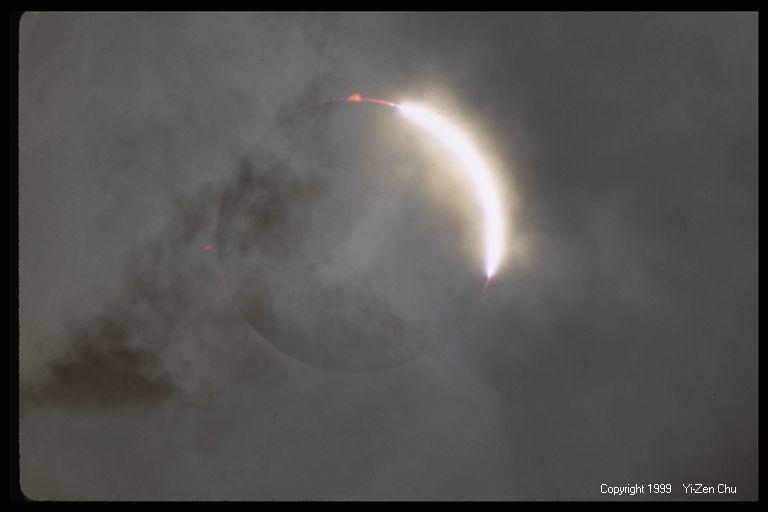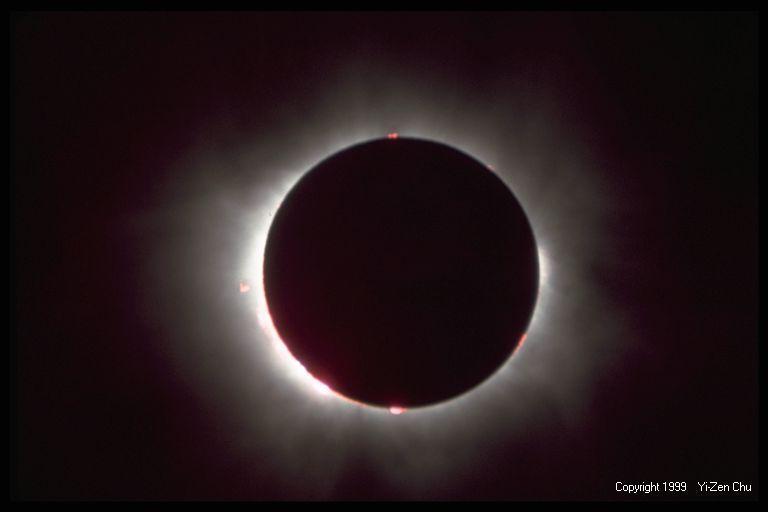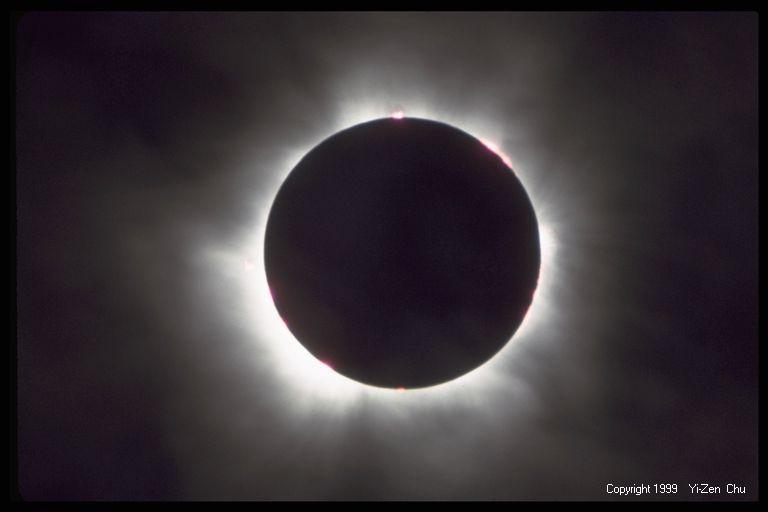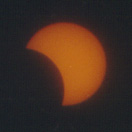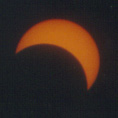New Haven, Connecticut, USA
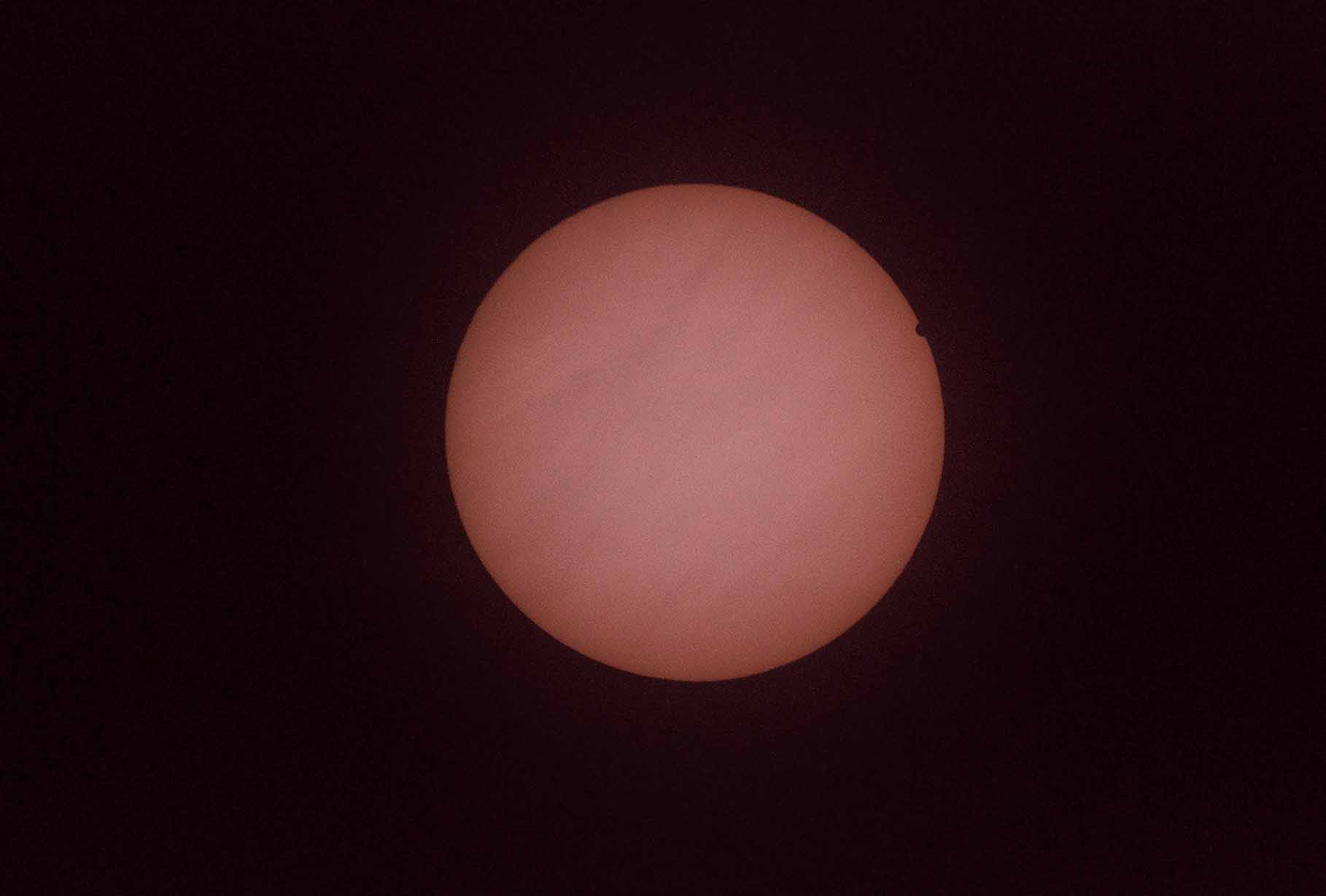

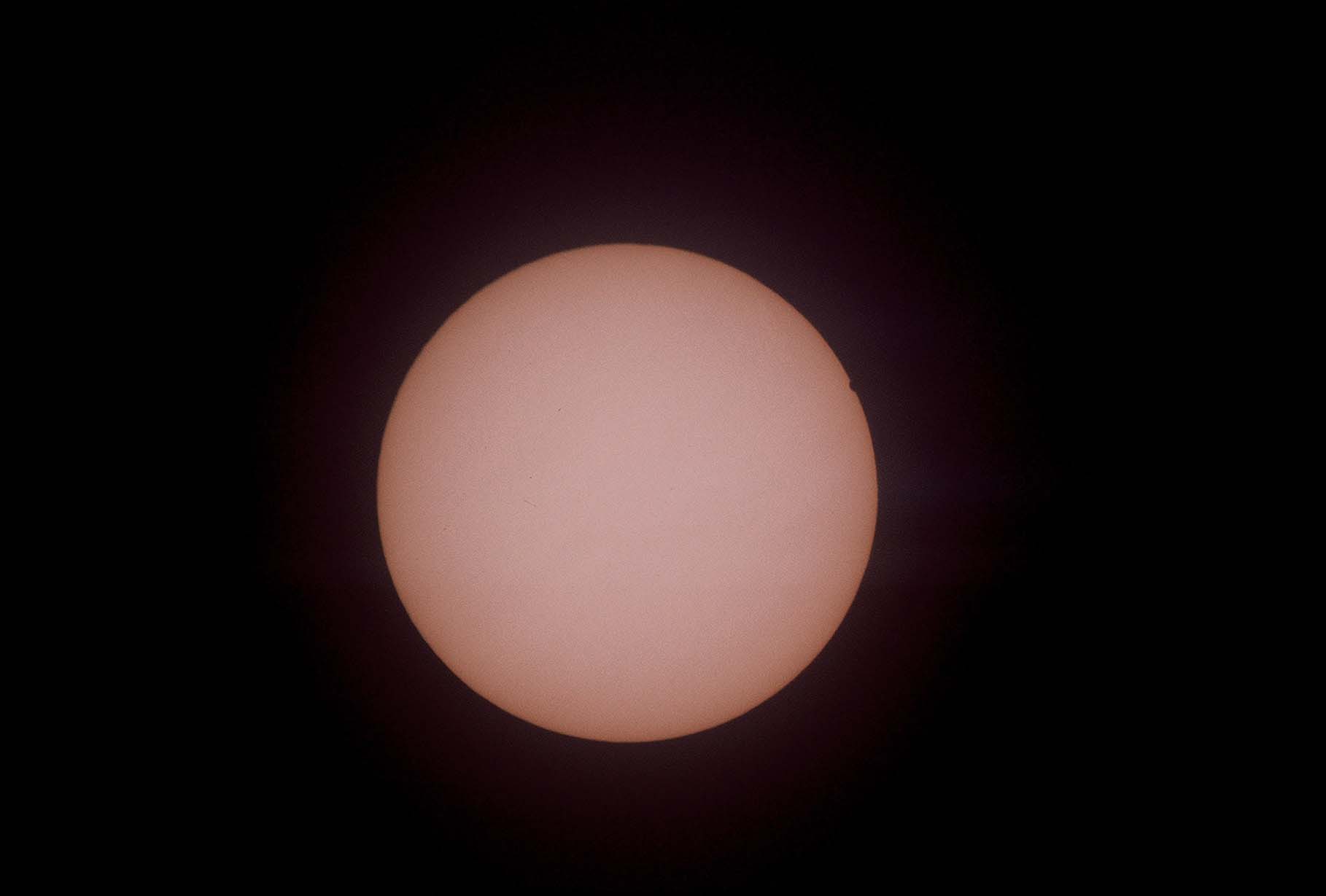
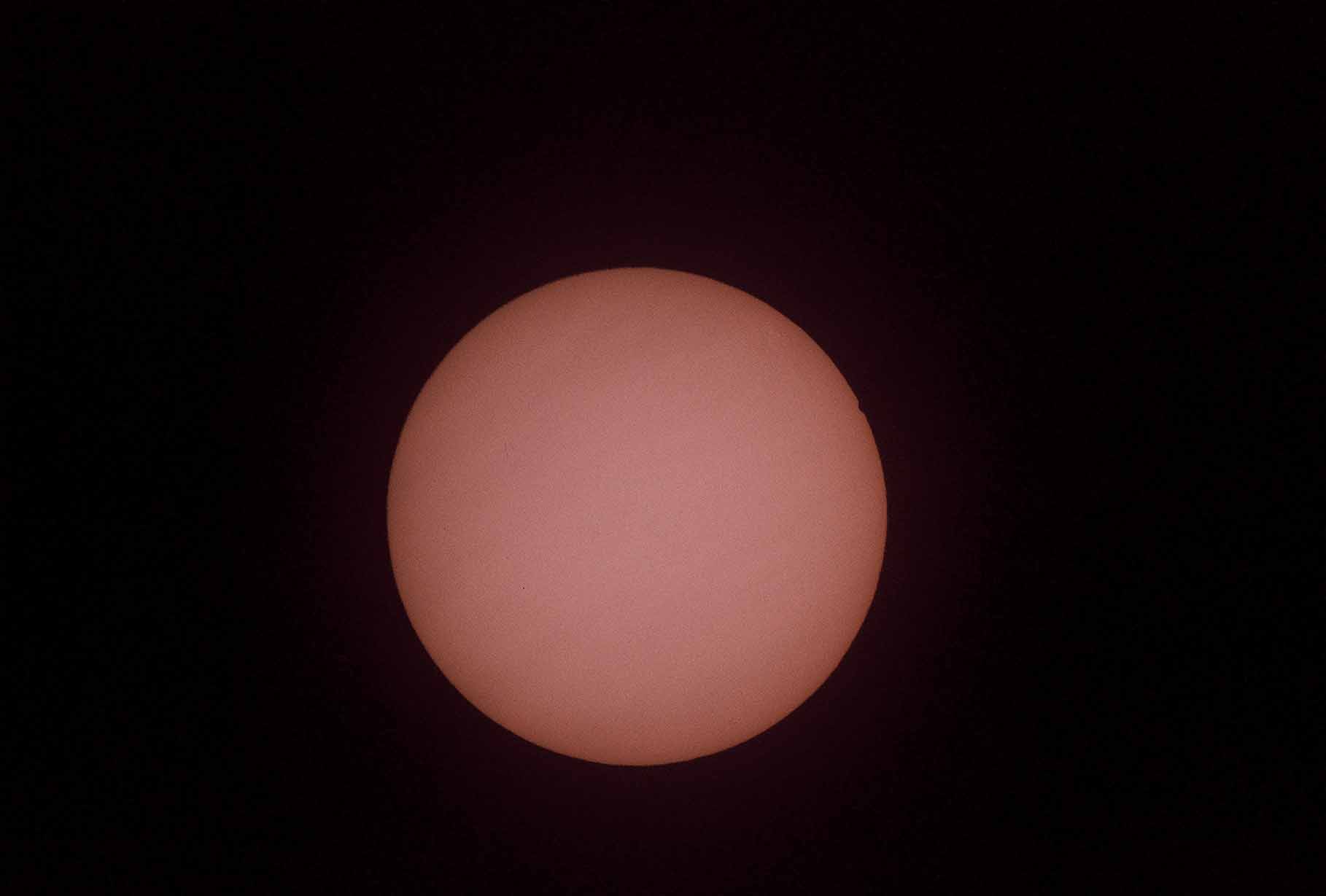
Location:
Pier at Sound School, high
school at New Haven, Connecticut, USA
Date: June 8, 2004
Instrument: Photography: Borg 100 ED f/6.4 with Astro-Physics 2x convertible barlow; Visual: University Optics 80mm refractor.
Camera: Nikon F4 with custom made 15X viewfinder for critical focusing
Mount: Losmandy GM-8
Film: Kodakrome E200 slide film
Filter: BAADER solar filter material
Comments: (Scanned directly from original slides.)
Arrived at the pier slightly after 4 am local time (sunrise was roughly 5:20 am) but due to cloud cover the transit was only visible for approximately half an hour or so until it ended. Most shots were underexposed due to the presence of clouds - I should have bracketed further in the longer exposure direction. The sequence above shows Venus' disk exiting the Sun's.
Bai Lei's pictures of the gathering:
(Note: The following photographs are Copyright 2004 Bai Lei.)
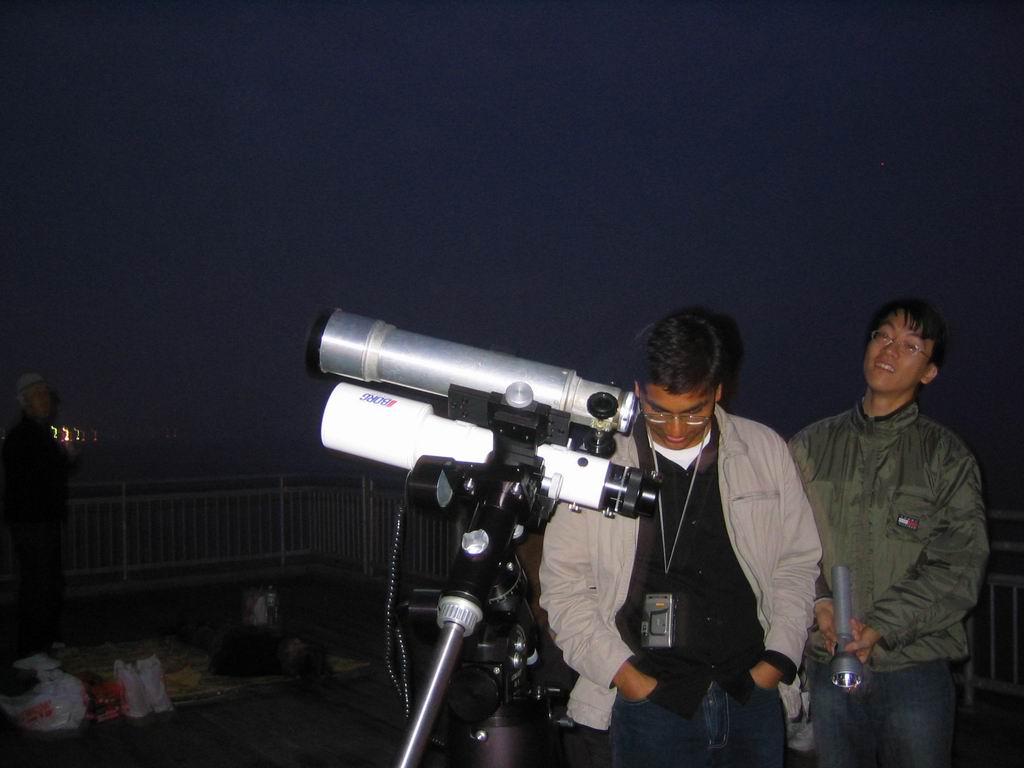
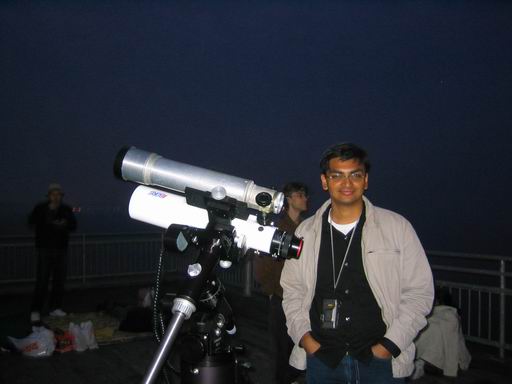
Breakfast by the waters. From left: Xiaowei, Deepti and Kevin.
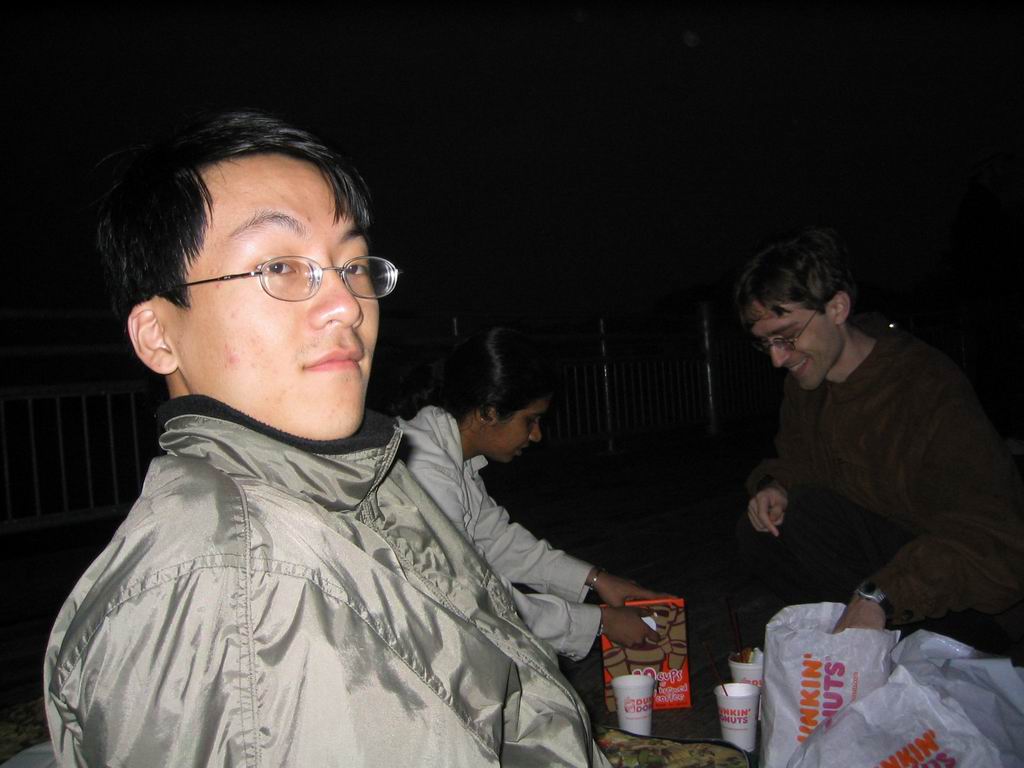
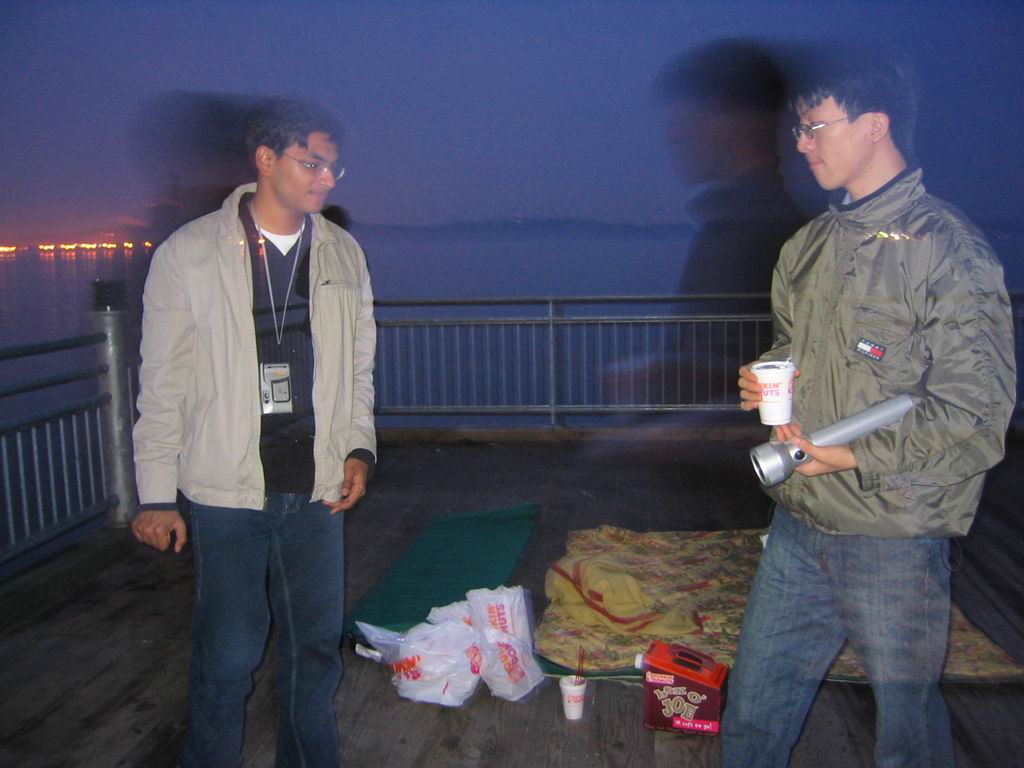
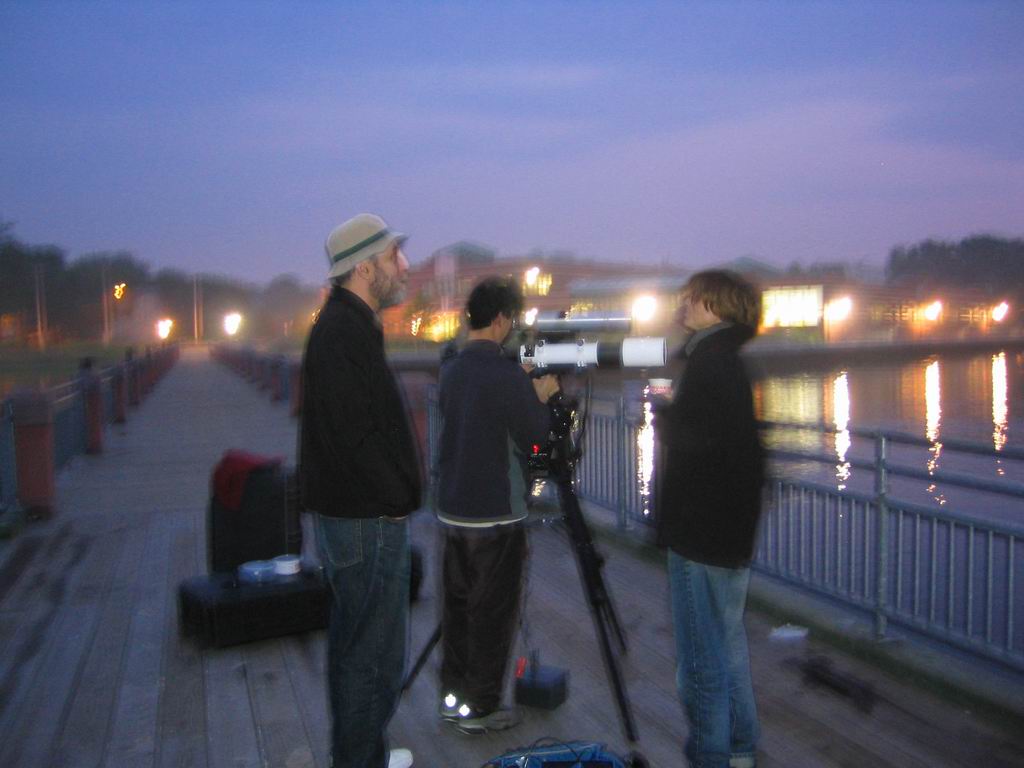
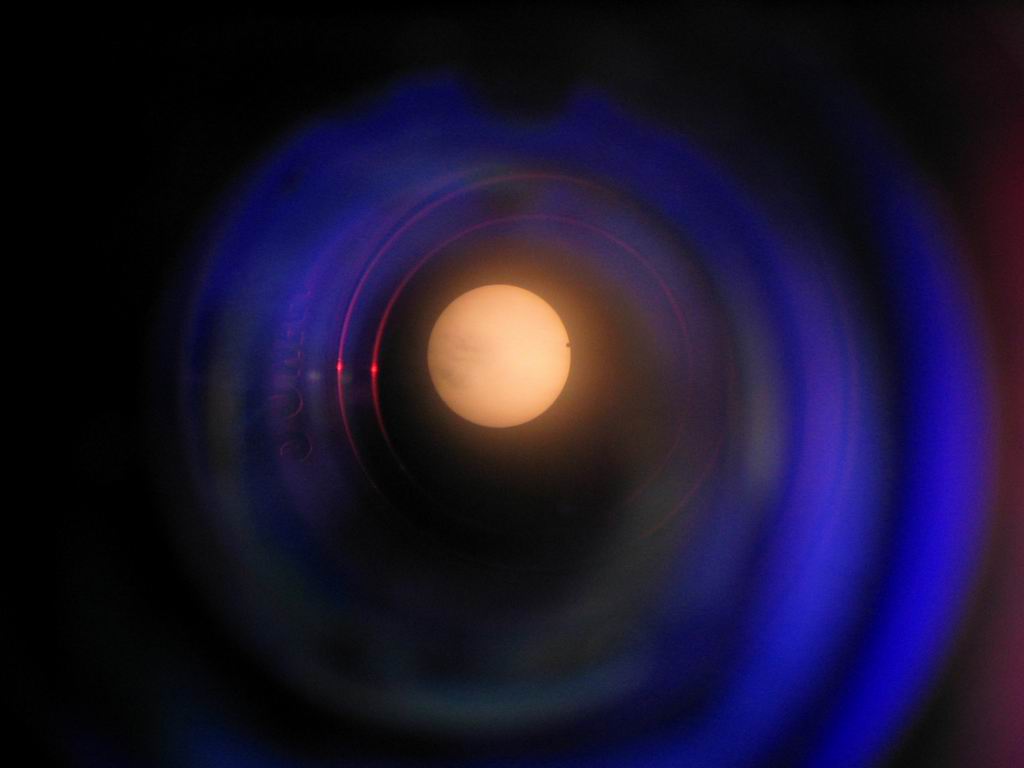
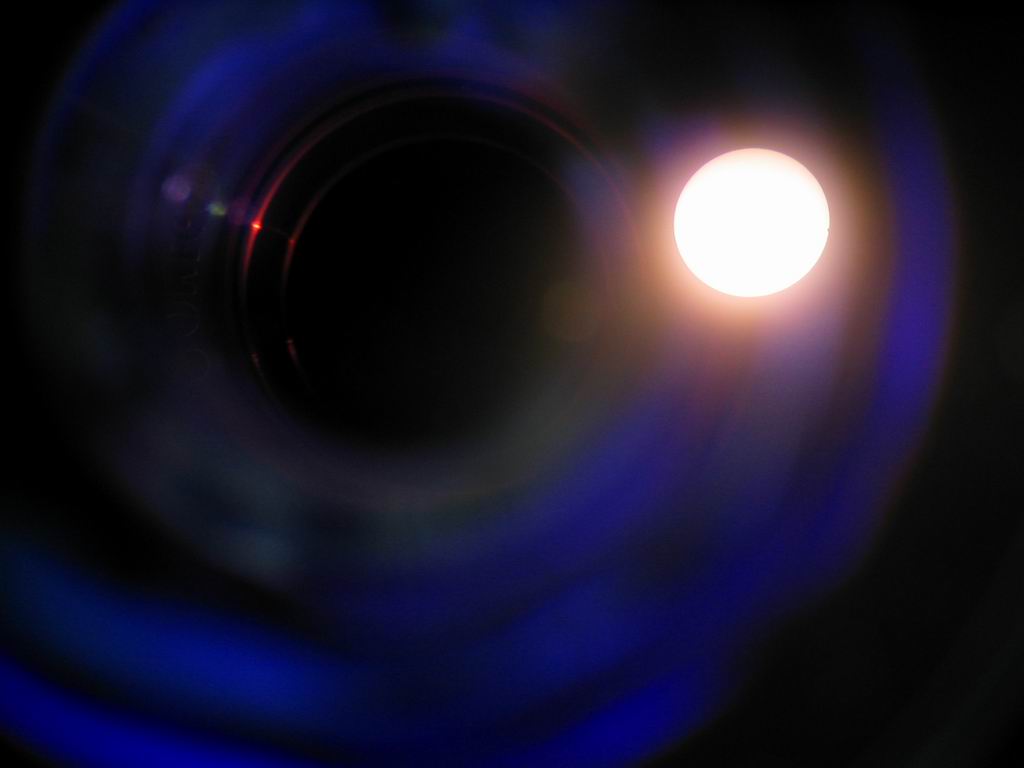
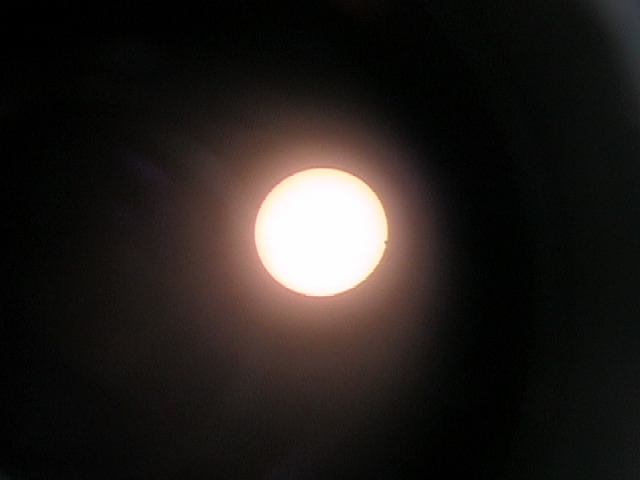
Copyright 2004 Xiaowei Zhu
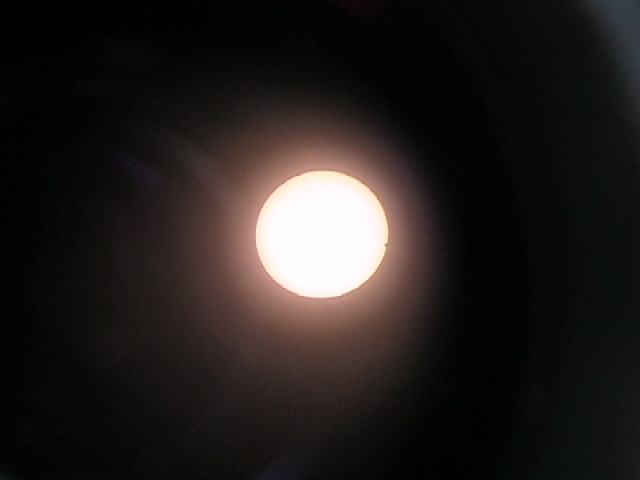
Copyright 2004 Xiaowei Zhu
Date: June 8, 2004
Instrument: Photography: Borg 100 ED f/6.4 with Astro-Physics 2x convertible barlow; Visual: University Optics 80mm refractor.
Camera: Nikon F4 with custom made 15X viewfinder for critical focusing
Mount: Losmandy GM-8
Film: Kodakrome E200 slide film
Filter: BAADER solar filter material
Comments: (Scanned directly from original slides.)
Arrived at the pier slightly after 4 am local time (sunrise was roughly 5:20 am) but due to cloud cover the transit was only visible for approximately half an hour or so until it ended. Most shots were underexposed due to the presence of clouds - I should have bracketed further in the longer exposure direction. The sequence above shows Venus' disk exiting the Sun's.
Bai Lei's pictures of the gathering:
(Note: The following photographs are Copyright 2004 Bai Lei.)
Setting
up.
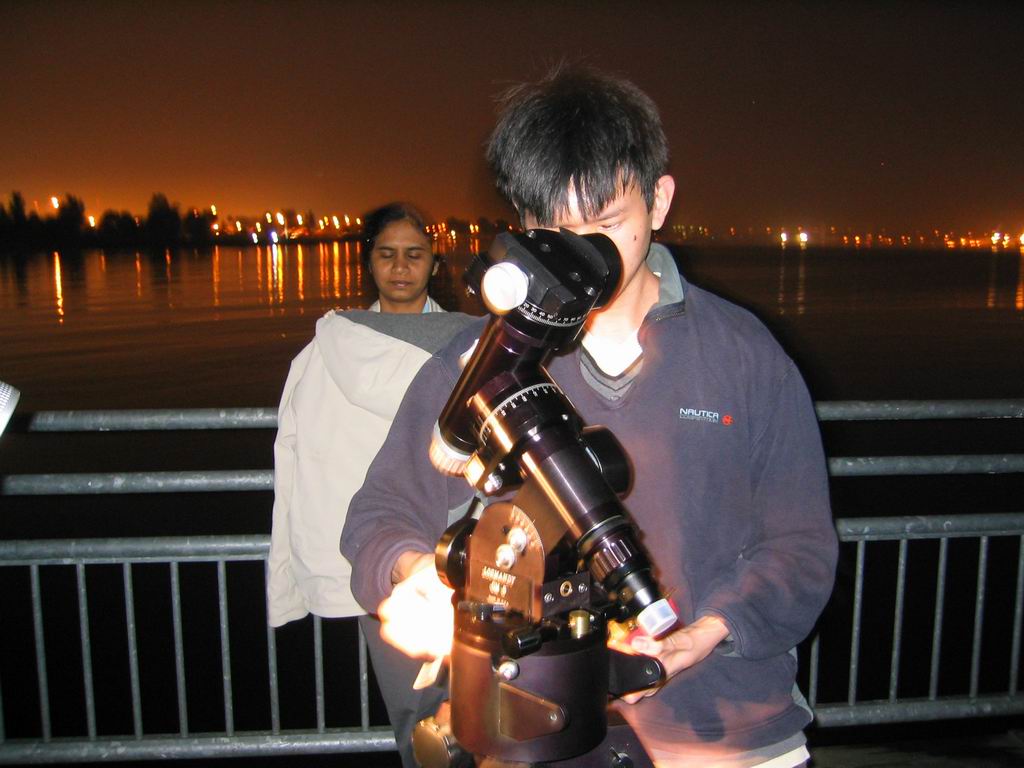
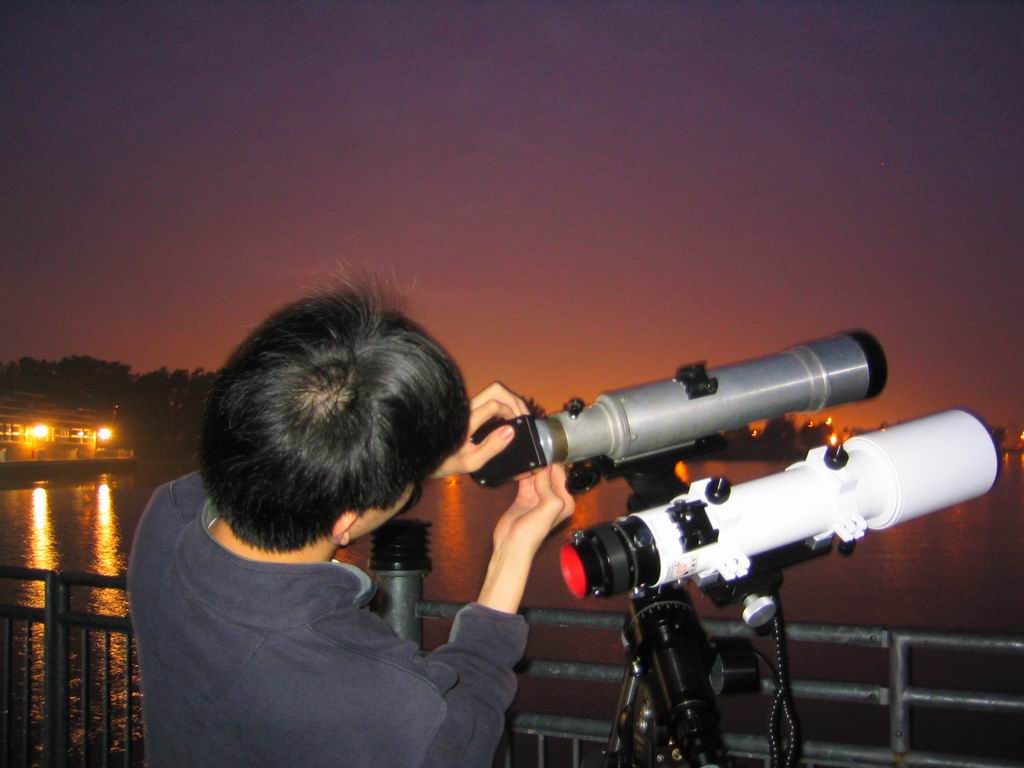


Friends
with my setup.
From right: Xiaowei, Pradipta, and (far left) Gregg. My setup includes
the Losmandy GM-8 mount, Borg 100 ED f/6.4 (white tube) and the
University Optics 80mm refractor (aluminium tube).


Breakfast by the waters. From left: Xiaowei, Deepti and Kevin.

The
wait: Pradipta
and Xiaowei...

...Gregg and Sacha

The transit.
These shots were taken by simply placing the digital camera's lens
right behind the 35mm Panoptic I was using for visual observing. The
results are surprisingly good.


Xiaowei's
pictures of the transit:
Taken using the same method as Bai
Lei's above.

Copyright 2004 Xiaowei Zhu

Copyright 2004 Xiaowei Zhu
Total Solar Eclipse, August 11, 1999
Burcharest, Romania
